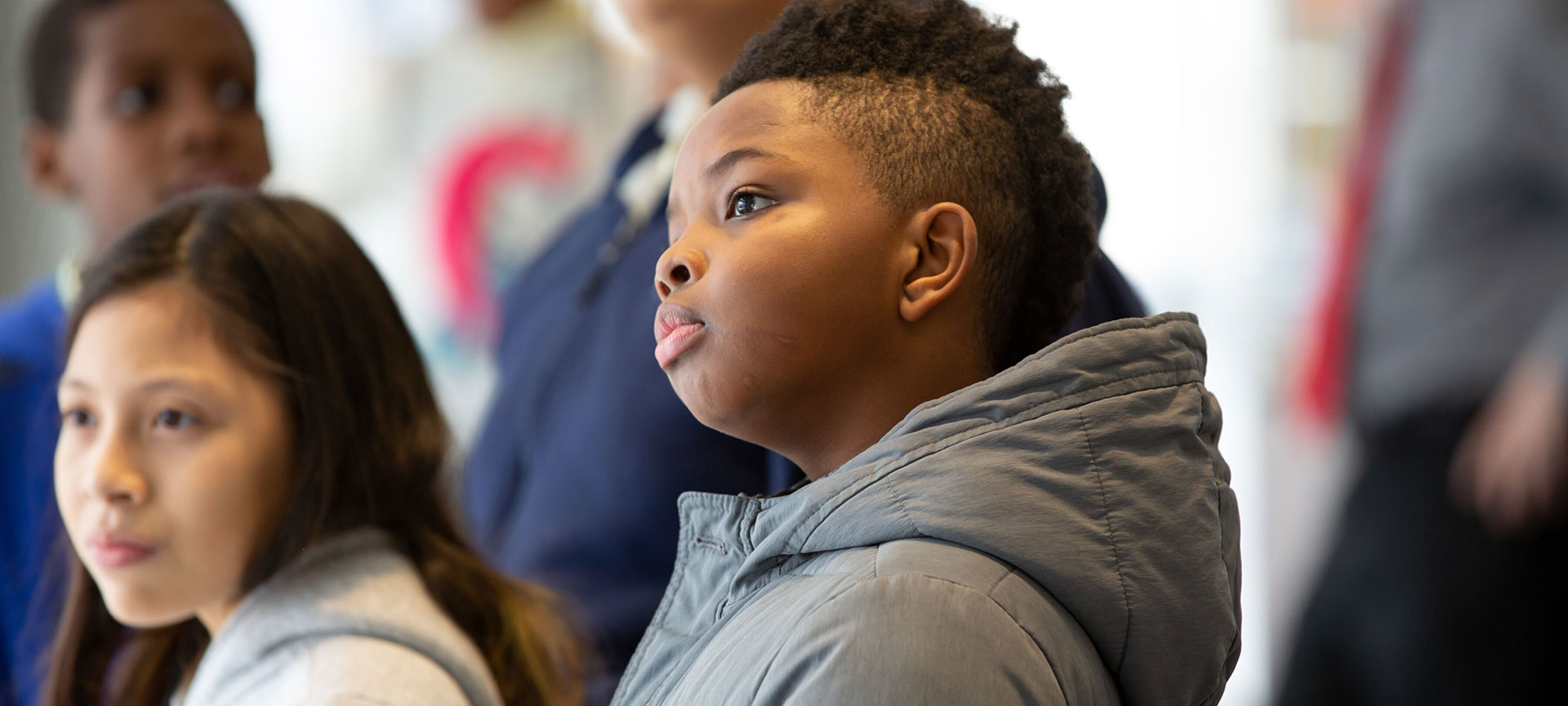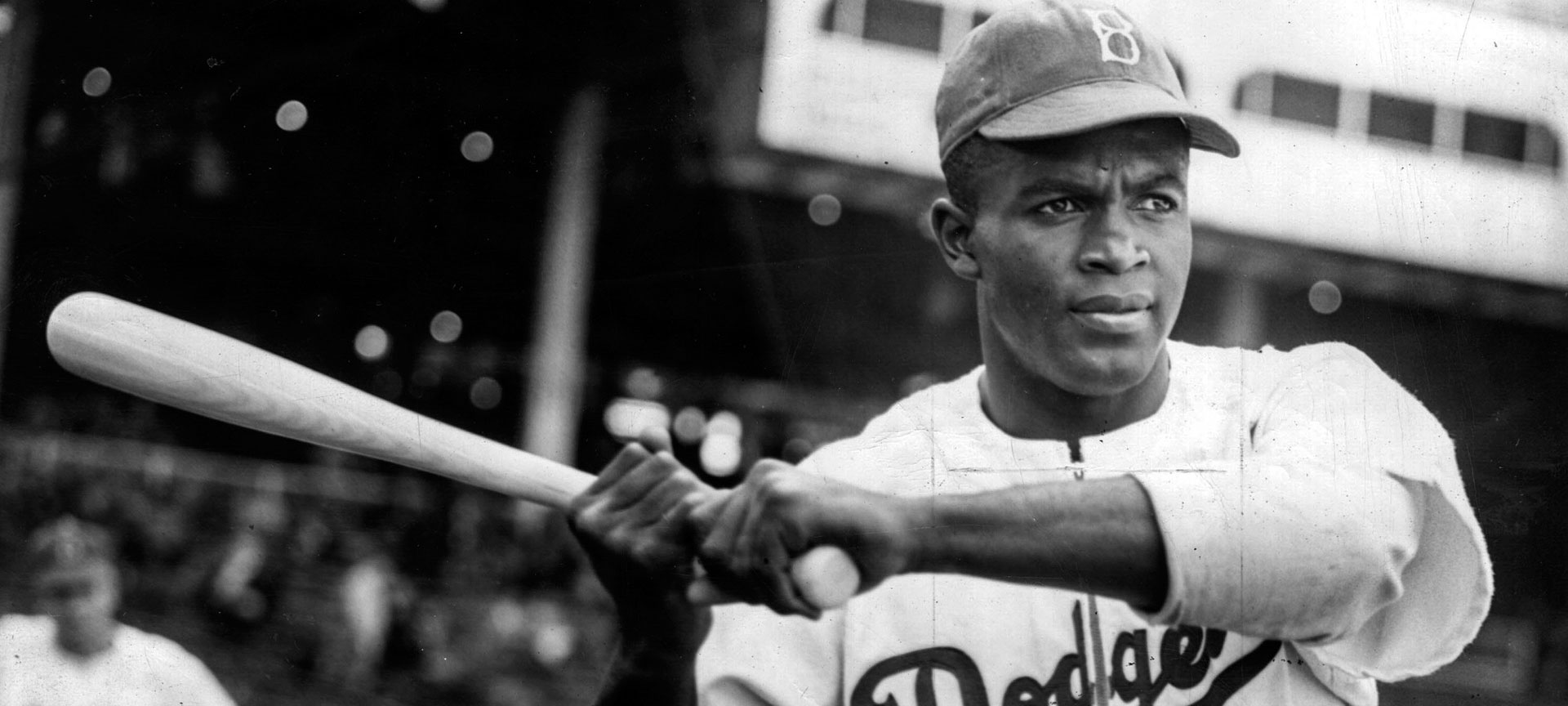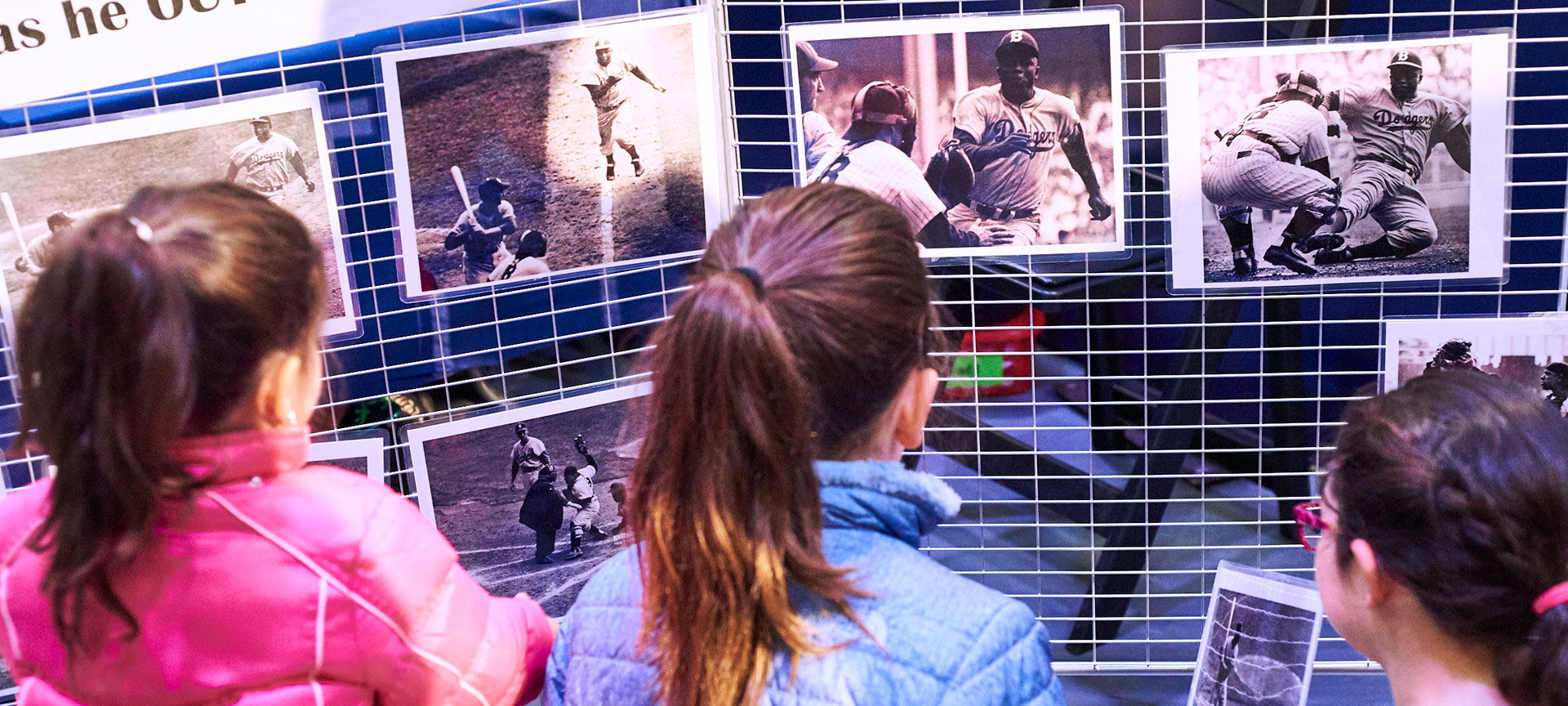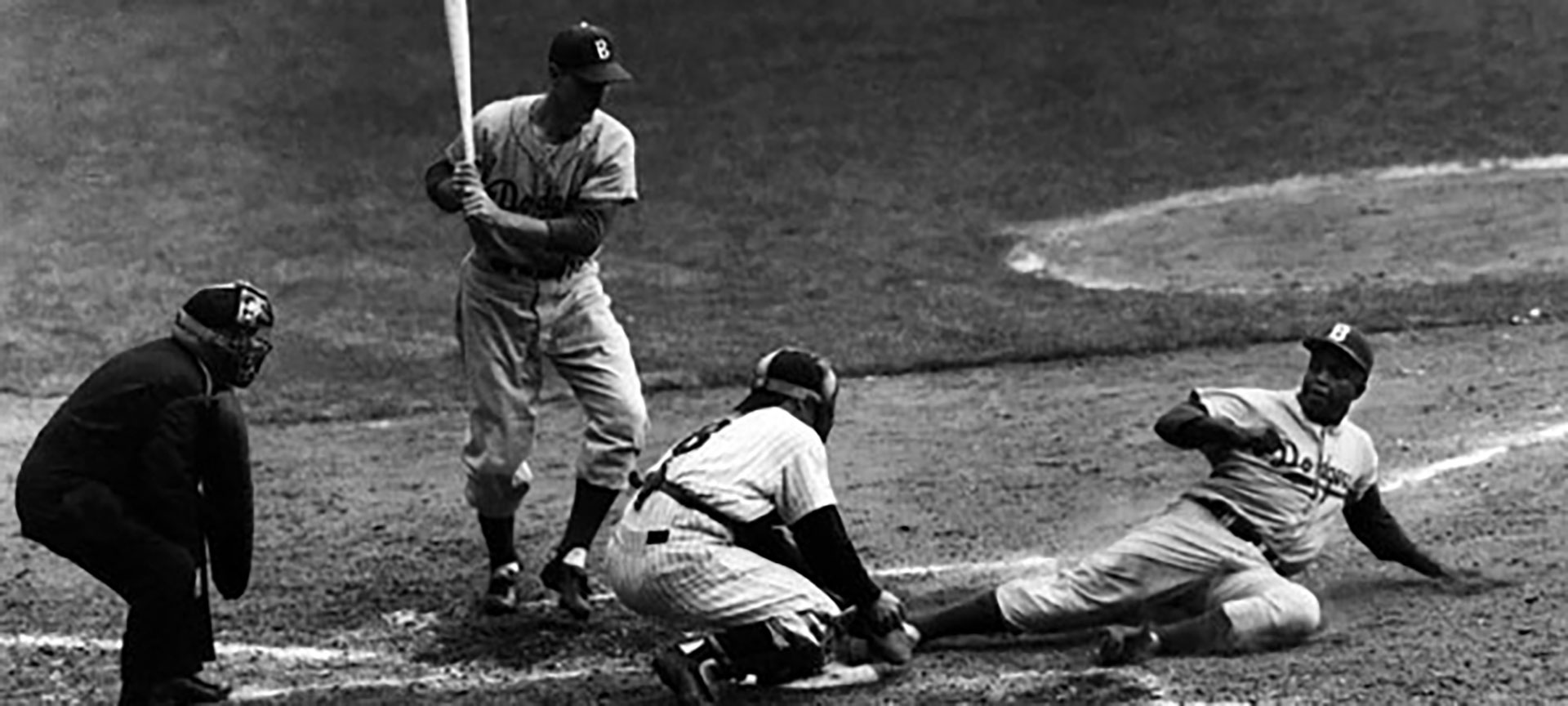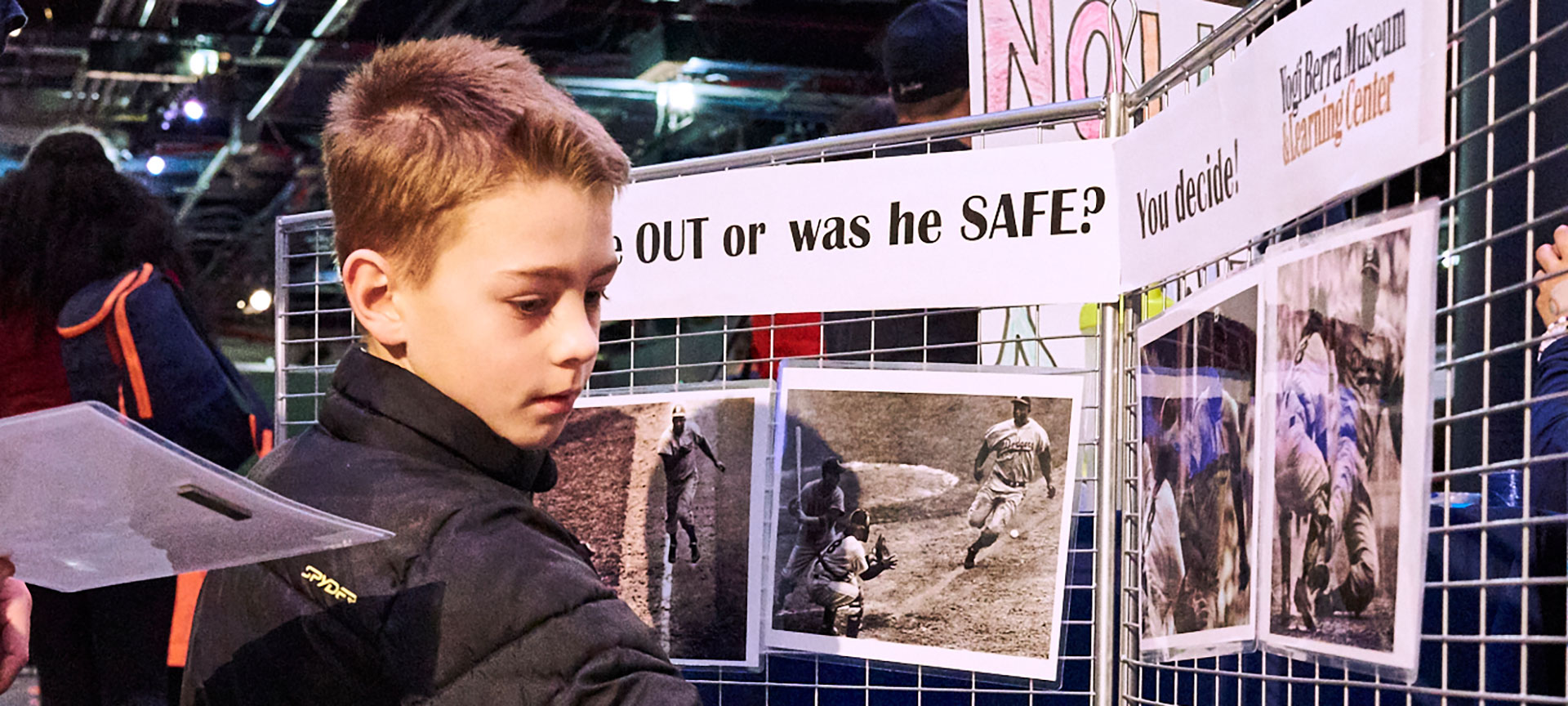Standing Up
Civil Rights, History and the Unlikely Friendship of Yogi Berra & Jackie Robinson
Overview:
Hall-of-Famer Yogi Berra’s tremendous athleticism and talent made him the “winningest” player in baseball history. The values he stood for and practiced throughout his life (respect, teamwork, perseverance and excellence) made him a national icon and the perfect subject for a lesson in Character-Building. The focus of this lesson is Yogi’s long (and arguably unlikely) friendship with fellow baseball great Jackie Robinson.
Objectives:
Students will:
- Learn the basics of baseball
- Understand how Math plays a role in sports
- Consider race relations and history through the extraordinary friendship of Yogi Berra & Jackie Robinson
- Think critically about a controversial moment in sports history (The 1955 World Series -Yankees vs. Dodgers)
- Create theatrical staging inspired by photographs
Key Terms:
Through hands-on activities and the use of technology, students will become familiar with such terms as immigrant, persecution, prejudice, racism, civil rights, breaking the color barrier, rivalry, Baseball Basics, Pythagorean’s Theorem, hypotenuse and tableau.
Part 1 – Yogi & Jackie Slideshow
Motivational Activity:
Students watch a brief slide show about baseball legends, Yogi Berra & Jackie Robinson. The slideshow illuminates their friendship, highlighting how integrity, respect and kindness transcend both rivalry and race, years before the Civil Rights movement. Students also discuss the connection between Yogi’s Italian immigrant roots and their own family heritage.
Essential Questions:
- Why do we call the friendship between Yogi Berra and Jackie Robinson “unlikely”?
- Why was Jackie Robinson significant in the history of our national pastime? (What does it mean to “break the color barrier”?)
- What is an immigrant? What challenges do immigrants face?
Part 2 – Baseball 101 Video
Part 3 – PHOTO GALLERY: Game 1 of the 1955 World Series
Students gather around a grid of eleven black-and-white sequential photographs from an iconic moment in baseball history: Game 1 of the 1955 World Series, Yankees vs. Dodgers.
Objectives:
Students will:
- Be able to reconstitute a historical moment through the close examination of primary source photographs
- Draw conclusions about the outcome of the famous baseball play based on the photographic evidence
Essential Questions:
- Though the umpire called Jackie “Safe,” was he “Safe” or “Out”?
- Given that there was no instant replay at the time, and based on these photographs, do you agree with the ump’s call?
- How do we go about looking for evidence to make a decision about the outcome?
Part 4 (optional, 9th grade & up) – Math Lesson
In this activity we use geometry to assess the umpire Bill Summers’s declaration that Jackie Robinson was safe.
Essential Questions:
- What is Pythagorean’s Theorem?
- How do we use Umpire Summers’ height, Yogi’s height and the angle of the ball in play to form an equation?
- Which part of a triangle would be the equivalent of Umpire Summer’s sightline?
Part 5 – Creating a Tableau
Students are put into small groups. Each group picks one photo from the 1955 World Series sequence. Based on their photo, students put on costumes and “act out” or create a tableau – a still picture – reenacting the participants in the photos: Yogi, Jackie, the umpire, the batter and any other characters who might be found on a baseball field. The activity culminates in a group-by-group “performance” of each tableau.
Objectives:
Students will:
- Learn to embody a dramatic character
- Work as a group to complete a task
- Work together to solve a problem
Essential Questions:
- How do we decide who plays which character for our tableau?
- How do we make the positions we hold realistic?
- How do we “rehearse”?
NJ State Standards
HISTORY/SOCIAL STUDIES, GRADE 6-8
Integrate visual information (e.g., in charts, graphs, photographs, videos, or maps) with other information in print and digital texts.
D1.2.3-5. ELA, GRADE 5
Identify disciplinary concepts and ideas associated with a compelling question that are open to different interpretations.

